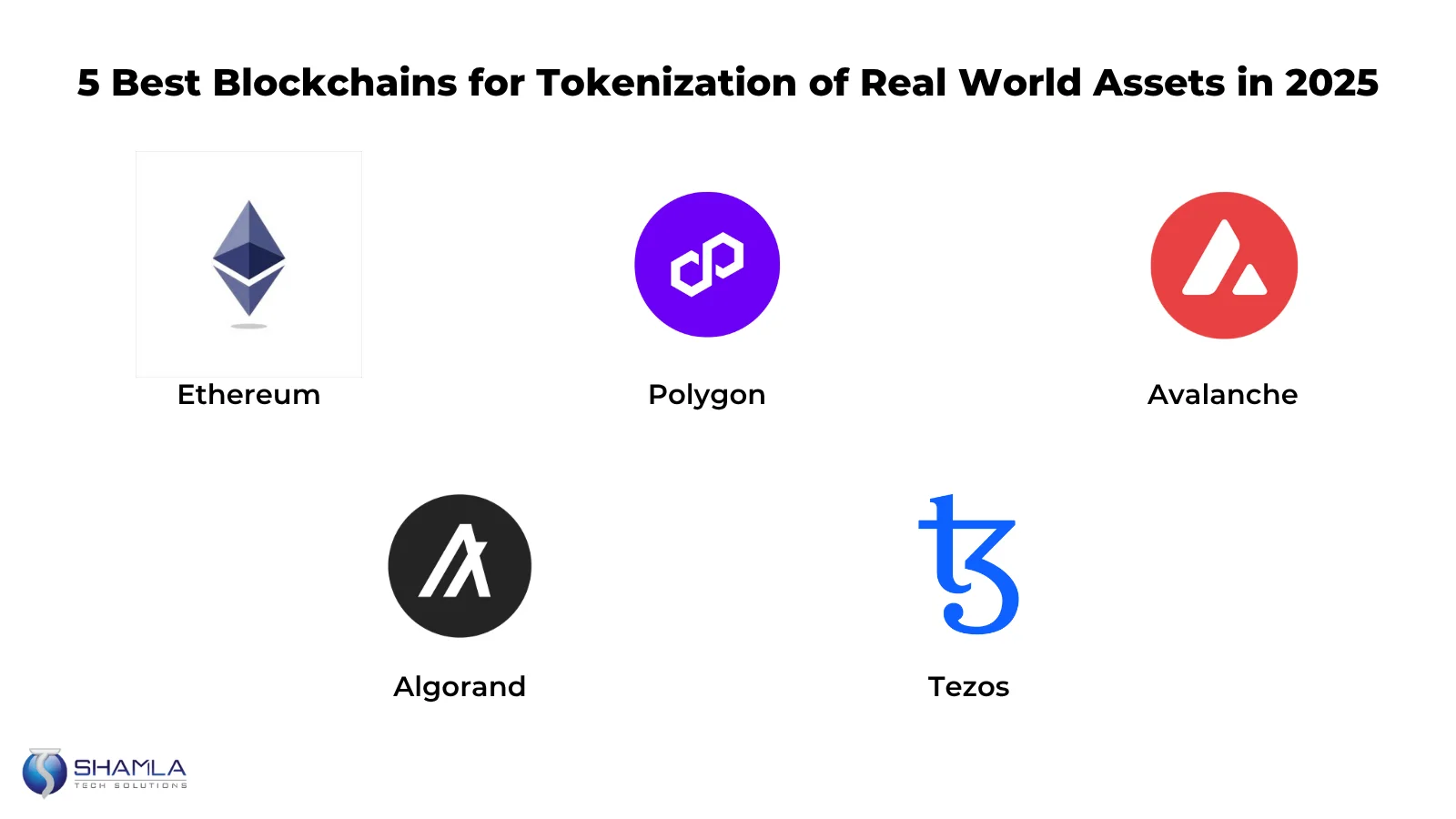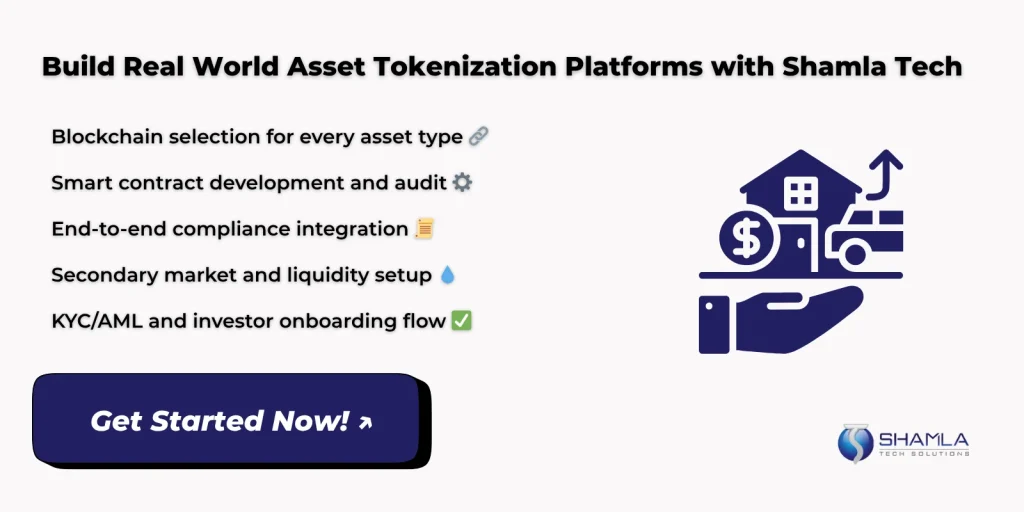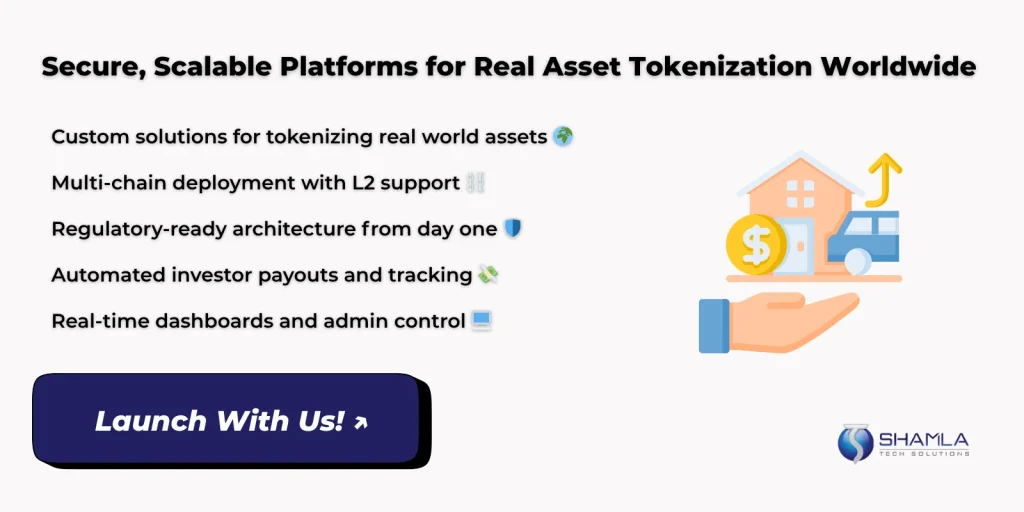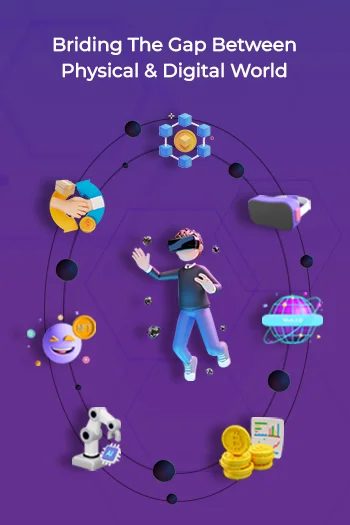Top Blockchains for Real World Asset Tokenization
1. Ethereum
Ethereum leads tokenization of real world assets through established token standards like ERC-20, ERC-721, and ERC-3643. Its vast developer community and institutional backing, such as BlackRock’s BUIDL fund, boost confidence. Ethereum’s mainnet ensures time-proven security and interoperable smart contract libraries.
However, high gas fees can discourage small issuances. Layer-2 rollups ease congestion and lower costs. Developers building RWA tokenization platforms leverage Ethereum’s liquidity pools and decentralized finance integrations. By tokenizing real world assets on Ethereum, issuers tap global markets and 24/7 trading. Built-in tooling and audit frameworks further solidify Ethereum’s leadership in real asset tokenization and developer tools ecosystem support.
Why Ethereum is the Best Blockchain for Real World Asset Tokenization:
- Ethereum’s broad decentralization offers unmatched security and trust, making tokenization of real world assets robust and continually reliable globally traded.
- ERC-20 and ERC-721 standards ensure seamless integration, supporting NFT real world assets issuance with mature tooling and liquidity provisioning mechanisms.
- Layer-2 networks reduce fees dramatically, allowing cost-effective real world assets crypto operations without sacrificing Ethereum’s security guarantees and scalability benefits.
- Smart contract audits and developer resources mitigate coding risks, ensuring RWA tokenization projects maintain compliance and operational transparency integrity controls.
- Widespread community support fosters innovation, with real asset tokenization tooling and dApps driving tokenizing real world assets adoption rapidly globally.
2. Polygon
Polygon optimizes Ethereum’s network, reducing fees and boosting throughput for real world asset tokenization. Its sidechain architecture processes thousands of transactions per second with latency. Enterprises like Nike and Starbucks use Polygon to launch tokenizing real world assets projects.
Security is assured through Ethereum checkpoints, ensuring state validation. Developers use Polygon SDK to deploy RWA tokenization smart contracts. Integrating Ethereum’s ecosystem, Polygon provides liquidity and DeFi tools for real asset tokenization. It encourages real world assets crypto initiatives and NFT real world assets marketplaces. Low gas costs and fast finality make it ideal for scalable tokenization of real world assets.
Why Polygon can be a preferred Blockchain for Real World Asset Tokenization:
- Low transaction fees on Polygon reduce costs for tokenization of real world assets, attracting institutions and small issuers alike globally.
- Ethereum compatibility grants access to DeFi liquidity, enabling real world asset tokenization projects to leverage established protocols and partnerships widely.
- High throughput supports mass issuance of tokens, offering scalability for RWA tokenization without network congestion issues cost-effectively and globally always.
- Security via Ethereum checkpoints ensures integrity for tokenizing real world assets, maintaining trust for enterprises and regulators internationally continuously robustly.
- Mature developer ecosystem offers tools and SDKs that simplify real asset tokenization reducing development time and integration complexity securely rapidly.
3. Avalanche
Avalanche’s fast transaction processing and customizable Subnet framework make it well-suited for the tokenization of real world assets. Subnets let enterprises customize consensus rules for compliance and performance. Avalanche finalizes transactions in under a second, supporting rapid token issuances and liquid markets.
Ava Labs promotes RWA tokenization via asset-backed stablecoins, integrating off-chain data through oracles. Its energy-efficient Proof-of-Stake model meets sustainability goals while securing real world assets crypto operations. Developers use Avalanche’s C-Chain for EVM compatibility, simplifying tokenizing real world assets deployments. The network’s dynamic fee structure reduces costs during high demand. Avalanche’s ecosystem fosters innovation in real asset tokenization and real world asset NFT marketplaces.
Why Avalanche can be a preferred Blockchain for Real World Asset Tokenization:
- Subnets offer customizable environments, ensuring compliance rules and performance targets for tokenization of real world assets in enterprises cost-effectively globally.
- High throughput finalizes transactions quickly, reducing settlement risk for RWA tokenization and enabling liquid secondary markets 24/7 securely sustainably globally.
- EVM compatibility on C-Chain simplifies developer workflows, enabling rapid deployment of contracts for tokenizing real world assets solutions consistently efficiently.
- Proof-of-Stake model ensures low energy consumption and network security for real world assets crypto projects, aligning with ESG goals globally.
- Dynamic fee mechanism adjusts costs during demand spikes, making real asset tokenization cost-predictable and reliable under varying loads efficiently globally.
4. Algorand
Algorand delivers instant finality and low-cost transactions, ideal for tokenization of real world assets. Its Pure Proof-of-Stake consensus secures networks while using minimal energy. Algorand’s smart contract layer supports real asset tokenization with TEAL scripts designed for compliance.
Government collaborations, such as El Salvador’s central bank digital currency (CBDC) trial, highlight Algorand’s strong reputation for meeting regulatory standards and supporting compliant blockchain solutions. Platforms built on Algorand facilitate tokenizing real world assets, offering fees and throughput. RWA tokenization projects benefit from Algorand’s atomic transfers and Algorand Standard Assets framework. NFT real world assets issuance is by native support for asset creation. Developers leverage open-source SDKs to integrate real world assets crypto marketplaces.
Why Algogrand can be a preferred Blockchain for Real World Asset Tokenization:
- Algorand’s instant finality eliminates confirmation delays, enhancing trust for tokenization of real world assets in fast-moving markets globally securely efficiently.
- Low and predictable fees support large-scale real world asset tokenization, preventing cost overruns and encouraging wider adoption sustainably globally cost-effectively.
- Built-in compliance features like KYC and AML enhance RWA tokenization credibility, aligning with regulatory frameworks across jurisdictions securely seamlessly globally.
- Algorand Standard Assets simplify real asset tokenization by enabling native asset creation, reducing development complexity for projects rapidly robustly globally.
- Green consensus model supports sustainable real world assets crypto, reducing carbon footprint compared to energy-intensive alternatives efficiently securely globally cost-effectively.
5. Tezos
Tezos features a self-amending ledger, enabling seamless upgrades essential for long-term real world asset tokenization. Its formal verification process ensures high security for smart contracts, reducing bugs in tokenizing real world assets. Financial institutions like Société Générale issue bonds on Tezos, demonstrating trust in its infrastructure.
Tezos’ liquid proof-of-stake consensus provides low fees and energy efficiency. Developers use Michelson language to craft secure contracts for real asset NFT issuance and RWA tokenization. The protocol’s governance model allows stakeholders to vote on upgrades, fostering continuous innovation. Tezos’ on-chain treasury funds further support projects building NFT real world assets marketplaces.
Why Tezos can be a preferred Blockchain for Real World Asset Tokenization:
- On-chain governance enables protocol upgrades without forks, ensuring durability for tokenization of real world assets over time securely globally cost-effectively.
- Formal verification of smart contracts reduces vulnerabilities, bolstering trust in real asset tokenization and RWA tokenization projects securely efficiently globally.
- Liquid Proof-of-Stake consensus yields low fees and quick finality, ideal for tokenizing real world assets with cost-efficient operations securely globally.
- Institutional adoption by banks validates Tezos’s strength, supporting real world assets crypto and real world asset NFT issuances securely sustainably.
- Energy-efficient consensus aligns with ESG mandates, making tokenization of real world assets environmentally responsible for institutions securely globally cost-effectively robustly.
How to Choose a Blockchain for RWA Tokenization
1. Network Security and Consensus
2. Performance and Cost Metrics
3. Compliance and Legal Frameworks
4. Ecosystem Maturity and Tooling
RWA Tokenization Use Cases Across Industries
1. Real Estate
2. Commodities
3. Financial Instruments
4. Supply Chain
5. Art and Collectibles
How Shamla Tech Builds Platforms for Real World Asset Tokenization
Shamla Tech builds platforms for tokenization of real world assets by digitizing property, commodities, and invoices. We evaluate assets to choose efficient networks. Our focus on real world asset tokenization ensures compliance with regulations and audit trails. By leveraging RWA tokenization frameworks, we automate issuance and enhance liquidity. Security experts audit real world asset tokenization development, creating transparent ledgers. Scalable architectures enable fractional ownership and trading across borders. Rigorous testing and tools support real world asset tokenization development from design to launch. Shamla’s method for tokenization of real world assets emphasizes security and performance.
Here’s how we build Platforms for Tokenization of Real World Assets:
- Analyze transaction throughput and confirmation times to ensure scalable, low-cost performance for platform supporting asset tokenization across diverse use cases globally while operating securely and reliably.
- Evaluate fee structures, including gas costs and dynamic pricing, to keep operational expenses low and predictable for token issuance and trading across networks securely.
- Examine consensus mechanisms to balance security, decentralization, and energy efficiency when building RWA tokenization platforms and minimize environmental impact while ensuring network resilience under heavy loads.
- Verify compliance features like on-chain KYC, AML modules, and governance controls to meet legal requirements for real world asset tokenization across jurisdictions seamlessly and automatically.
- Review developer tools, SDKs, and community support to accelerate development and troubleshoot issues during real world asset tokenization development, ensuring code quality and reducing integration time.
- Assess interoperability and oracle compatibility to connect tokenized assets with pricing feeds and external systems in scalable future architectures, enabling multi-chain transactions across networks.
Conclusion
The tokenization of real world assets unlocks a vast market by turning illiquid items into digital tokens that trade nonstop. Different blockchains bring unique benefits – some excel in speed and low costs, others emphasize security or compliance, so there is no one-size-fits-all; project goals determine the optimal network.
Shamla Tech is a top real world asset tokenization development company specializing in designing and deploying platforms for RWA tokenization. Our teams guide clients through chain selection, smart contract configuration, and compliance integration. With experience across industries, Shamla Tech builds scalable and secure infrastructure for tokenization of real world assets and tap global liquidity pools easily.




